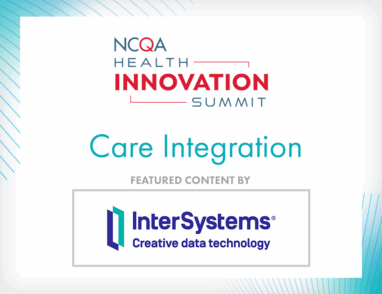Why You Shouldn’t Fear FHIR
April 19, 2023 · Andy Reynolds
In a recent webinar about the transformation of quality measurement, NCQA Chief Technology Officer Ed Yurcisin (introduced here and interviewed here) covered a range of topics, perhaps none more important than his reassurance, “FHIR is not scary technology.”
Ed shared simple definitions and metaphors to make his case. FHIR novices inside and outside NCQA found his explanations helpful and relatable. Here’s some of what he said.
FHIR’s Four Basic Parts…
Ed started with FHIR’s four foundations:
- REST APIs
REST (representational state transfer) is a software design style that gives developers lots of freedom and flexibility.APIs (application programming interfaces) are a technology most people use every day, because most website use APIs. APIs let different computer systems or devices communicate with each other.Combine REST and APIs, and you get versatility and accessibility.
- JSONJSON (JavaScript Object Notation) is the most common text format APIs use.Like REST APIs, JSON is a pervasive technology people use online all the time—even if they don’t know they’re using it.
- Data model
A data model defines or organizes what’s in a database and how the data elements fit together. - Value sets
Think of a value set as a “pick list” of valid values to represent something.When you order something from Amazon and select your state’s two-letter abbreviation from an alphabetized list, you’re choosing from a value set.In the context of FHIR, value sets are things like the SNOMED or LOINC codes that stand for medical conditions, diagnoses or other facts stored in an EHR.
…Plus a Fifth Part That Makes a Big Difference
- Mandated Data Exchange Protocol
Ed pointed out that CMS is aligning policies that make FHIR the attractive technology that underpins government-required data sharing.
This endorsement is a big reason for FHIR’s growth and bright future.
10th Graders Can Do This
Returning to the theme that “this isn’t scary technology,” Ed talked about his son, a high school sophomore, who’s studying REST APIs and JSON in a computer science class.
“Effectively, ONC has [mandated] high school-level computer science,” said Ed. “If 16-year-old kids can use REST APIs and JSON, then we can deploy this very effectively throughout our health care ecosystem.”
FHIR, Highways and Baseball
Today’s investment in FHIR is “like the interstate highway system for health care data,” according to Ed. “The government’s hope is that this infrastructure can be utilized for everyone in the United States dealing with health care.”
An interesting nuance about FHIR, however, is that government’s regulatory power is limited. Ed explained, “Think of FHIR as baseball. There’s a pitcher and there’s a catcher. The government can’t regulate catching. It can only regulate pitching. It can force an organization, a health plan, a provider, to pitch data. It cannot force [another entity] to catch that data and do something with it.”
But that isn’t likely to stop FHIR from having an impact. Ed predicts, “Innovative organizations will start catching FHIR data and doing something productive with it. The intention of CMS is that everyone in every health plan is required to pitch. Innovative plans will start catching and incorporating these external FHIR data sources into their data quality pipeline.”
…And Many More
“FHIR’s not scary” is just one of five themes Ed emphasized in the webinar. The others:
- Medicare Advantage and Medicaid Plans are required to share claims and clinical data, individually and in bulk (coming soon).
- All EHRs/providers were required to share bulk FHIR clinical data by the end of 2022.
- CMS and ONC are making it harder for health plans’ Chief Data Officers to maintain one technology “stack” for commercial and one for federally regulated plans.
- NCQA and HEDIS require mandated data sets.
We recommend anyone seeking a conversational, easy-to-understand intro to FHIR watch Ed’s talk ($).







